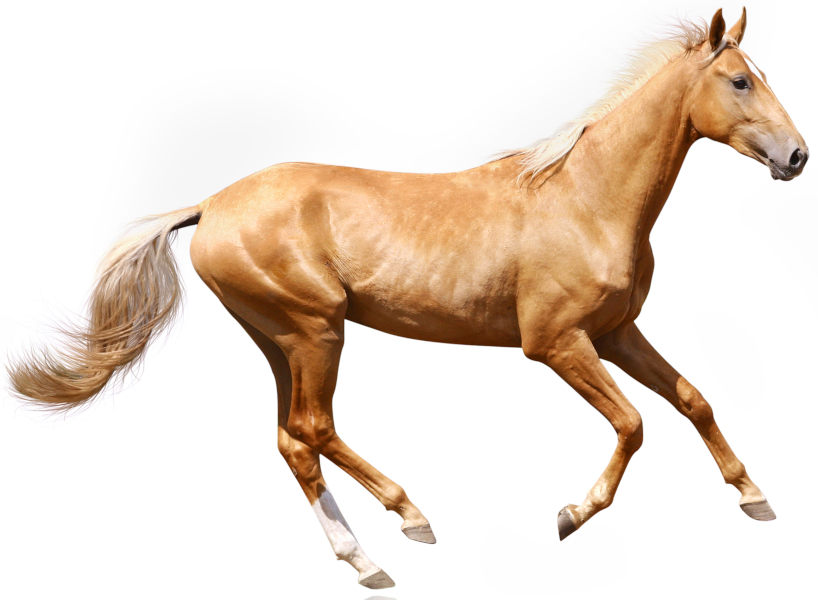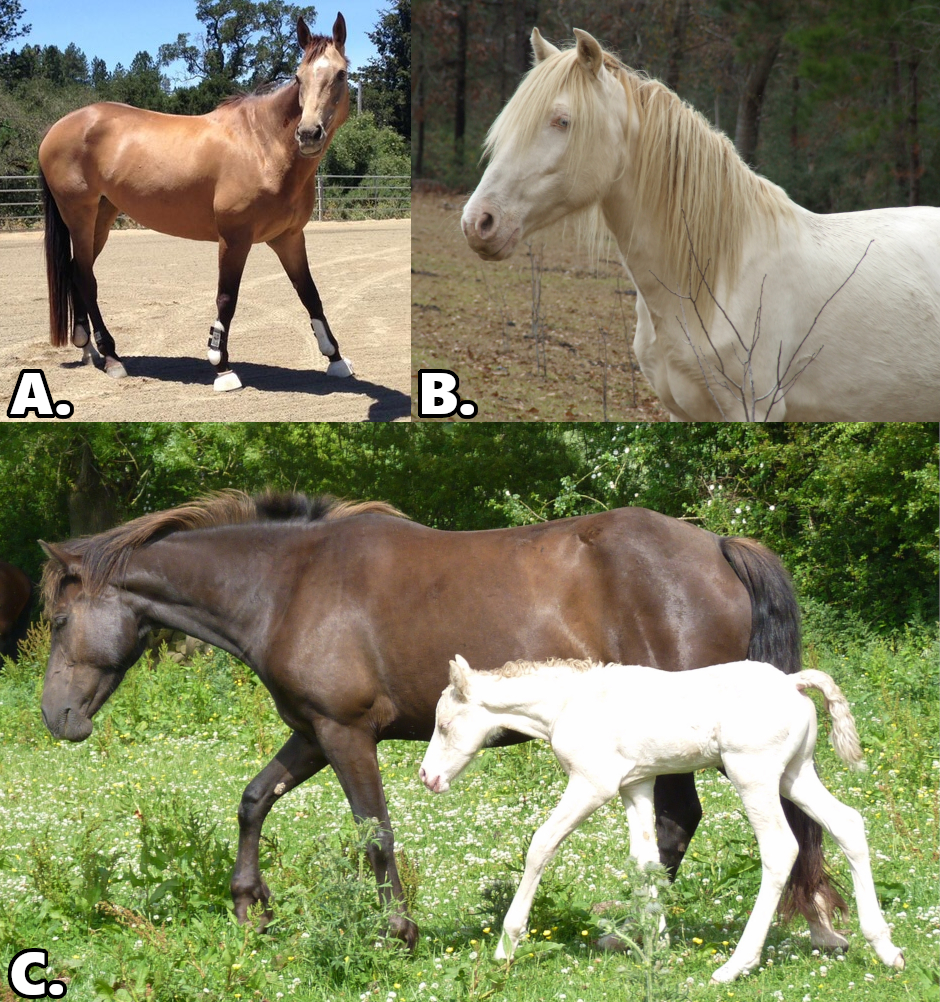Quick Summary

Click here for Price and Turnaround Time
Phenotype: Cream is a dilution that causes the palomino, buckskin, smoky black, cremello, perlino, and smoky cream coat colors.
Mode of Inheritance: Incomplete dominance
Alleles: N = Normal or non-cream, Cr = Cream
Breeds appropriate for testing: Many breeds
Explanation of Results:
- Horses with N/N genotype will not be cream dilute and cannot transmit this cream dilution variant to their offspring.
- Horses with N/Cr genotype are cream dilute and may transmit this cream dilute variant to 50% of their offspring. Matings with N/N genotype will result in a 50% chance of producing a cream dilute foal.
- Horses with a chestnut base coat color and Cr/N genotype will be palomino.
- Horses with a bay base coat color and Cr/N genotype will be buckskin.
- Horses with a black base coat color and Cr/N genotype will be smoky black.
- Horses with Cr/Cr genotype are double dilute and will pass this cream dilute variant on to all of their offspring. Matings with any genotype are predicted to produce all cream dilute offspring.
- Horses with a chestnut base coat color and Cr/Cr genotype will be cremello.
- Horses with a bay base coat color and Cr/Cr genotype will be perlino.
- Horses with a black base coat color and Cr/Cr genotype will be smoky cream.
Horse Coat Color Panel
$85 per animal
Full Color/Pattern Panel
$155 per animal
Shetland Pony Coat Color Panel
$100 per animal
Sample Collection
Horse DNA tests are carried out using cells from the roots of a hair sample (roughly 20-40 hairs).
1. Grab about 10 hairs at the base.
2. Wrap the hairs around your finger and give it a quick pull.
3. Check the ends to make sure the pulled hairs have roots.
4. Repeat the process until you have collected about 20-40 hairs with intact roots.
5. You can choose different places on the mane or tail. NOTE: For foals, we recommend pulling all hairs from the tail only.
6. Tape the hairs to the submission form and fold the form along the dotted line to protect the sample. Do not use ziploc bags as they can cause condensation that allows mold to grow on the hair.
7. Place the folded form containing the sample in a paper envelope and mail it to the laboratory.

The Cream dilution gene is responsible for the palomino, buckskin, smoky black, cremello, perlino, and smoky cream coat colors. Cream dilutes red pigment (phaeomelanin) to yellow pigment in single dose (palominos, buckskins, smoky blacks) and to pale cream in double dose (cremellos, perlinos, smoky cream). One copy of the cream dilution can have a very subtle effect on black pigment (eumelanin) although two copies of cream will cause significant dilution even on a black base coat
The mutation responsible for the cream dilution is in the gene SLC45A2 (c.457G>A; formerly known as MATP) and is thought to disrupt the trafficking of pigment molecules to developing melanocytes (pigment producing cells). The cream mutation shows incomplete dominance, so that one copy of the cream allele (heterozygous) produces a dilute phenotype and two copies of the cream allele (homozygous) produces a more extreme dilute phenotype. Mating a cream horse (Cr/N) to a non-cream horse (N/N) will result in a 50% chance of producing offspring with the cream dilution. Mating a homozygous cream horse (Cr/Cr) with a non-cream horse (N/N) will result in cream offspring 100% of the time.
Testing for the cream dilution allows breeders to identify homozygous animals (animals with two copies of the variant) which will always produce cream dilute offspring.
Note: This test is specific for a mutation in exon 2 of the SLC45A2 gene that is associated with the cream dilution. Other dilution genes or mutations that may produce coat colors that phenotypically resemble cream will not be detected by this test.